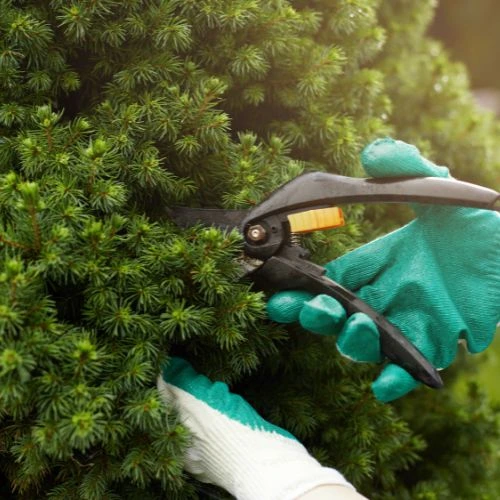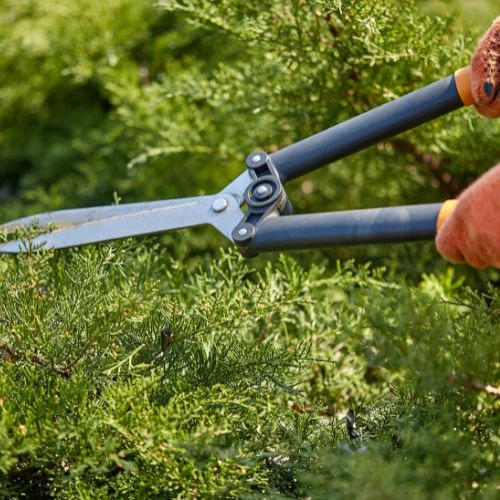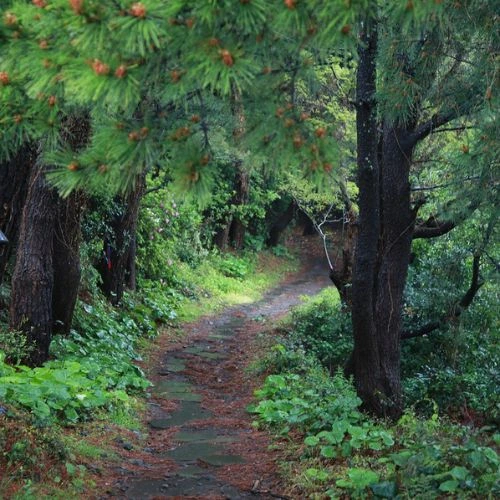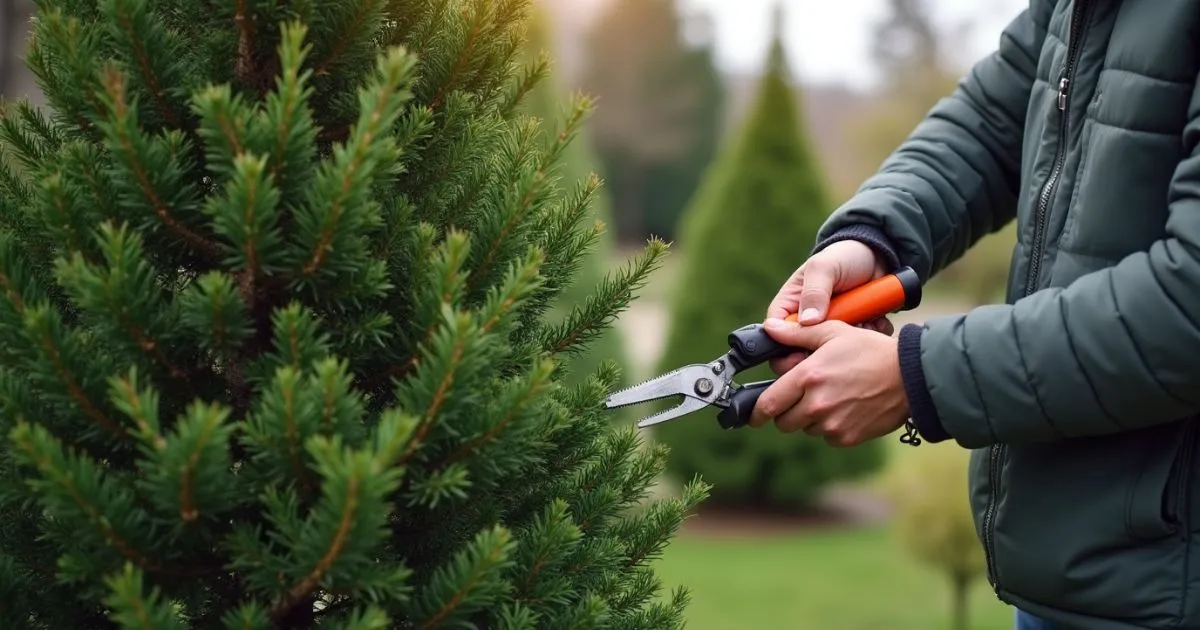In This Article
Pruning pine trees is essential for their health, strength, and appearance. By carefully removing certain branches, you can encourage better growth and shape your tree to look balanced and beautiful. For pine trees, pruning helps improve airflow, reduce the risk of disease, and keep your tree safe from broken or weak branches that could pose a hazard. If you’re new to pruning pine trees, don’t worry—this guide will walk you through the basics, including the best tools and techniques to use. You’ll learn why timing matters, which branches to remove, and how often to prune for the best results. With the right approach, you can keep your pine trees healthy, lush, and thriving all year long. Whether you’re pruning for health or aesthetics, following simple guidelines will help ensure your pine trees remain a beautiful feature of your landscape.
Why Pruning Pine Trees Matters
Pruning pine trees is more than just trimming branches
It’s a vital part of keeping your trees strong, healthy, and looking their best. When you prune a pine tree, you’re helping it grow in a balanced shape, which can make it more resilient against strong winds and heavy snowfall. Proper pruning also improves airflow through the branches, reducing the risk of fungal diseases that can harm your tree over time.
Another benefit of pruning pine trees is pest control. Dead or damaged branches can attract pests, such as beetles, which could harm your pine. By removing these problem branches, you’re making your tree less inviting to these pests.
Regular pruning
- Regular pruning also encourages better sunlight exposure for the inner branches, promoting even growth throughout the tree. For the best results, it’s important to follow proper techniques and to prune during the right season. When you understand why pruning pine trees is essential, you’re better equipped to take the right steps for a healthy, thriving landscape. Whether for beauty or health, regular pruning helps your pine trees stay beautiful and safe for years to come.
When to Prune Pine Trees
Timing is crucial when it comes to pruning pine trees. The ideal time to prune pine trees is typically from late winter to early spring, just before they start to produce new growth. During this period, pine trees are still dormant, meaning they’re less likely to suffer from stress or sap loss. Pruning at the right time also helps prevent infections, as pests and diseases are less active during colder months.
Why Late-Season Pruning is Risky
While you can prune pine trees in summer to remove dead or damaged branches, heavy pruning is not advised in late summer or fall. Late-season cuts can lead to sap leakage, which weakens the tree and makes it more vulnerable to pests.
Pruning Based on Tree Age and Health
When you’re planning your pruning schedule, consider the tree’s age and health. Younger trees might only need light pruning to help shape their growth, while older trees may require a bit more maintenance. Remember, pruning pine trees regularly keeps them strong and prevents future issues. By following a seasonal routine, you’ll encourage steady, healthy growth while maintaining the beauty and safety of your pines. Proper timing can make all the difference in your tree’s long-term health and appearance.
Tools You’ll Need for Pruning Pine Trees



Using the right tools for pruning pine trees can make the job easier and safer. Before you start, gather the essential tools: hand pruners, loppers, a pruning saw, and gloves. Each tool has a specific purpose, so knowing when to use each is key to a successful pruning session.
Choosing the Right Tool for Each Task
For small branches and new growth, hand pruners are ideal. They’re easy to handle and perfect for precise cuts on thin branches. Loppers are better for thicker branches that require more leverage, helping you cut through without damaging the tree. For large branches, a pruning saw is necessary. It’s designed to handle bigger, tougher branches that other tools can’t cut cleanly.
Tool Maintenance and Investing in Quality
Keeping your tools sharp is essential in order to help the tree heal faster and reduce the risk of infection. Before and after each pruning session, clean your tools to prevent spreading disease from one tree to another.
If you’re new to pruning pine, consider investing in quality tools. Durable, high-quality pruners and saws make the job more efficient and enjoyable. With the right tools and proper care, you’ll be well-prepared to keep your pine trees healthy and looking their best.
Top 7 Tips for Pruning Pine Trees
Pruning pine trees may seem challenging, but with the right approach, you can easily keep your trees healthy and beautiful. Here are seven practical tips to guide you in pruning pine, whether you’re shaping a young tree or maintaining an older one.
Tip 1: Know Which Branches to Remove
The first step in pruning pine trees is identifying which branches to cut. Start with dead, diseased, or broken branches—these not only make your tree look untidy but can also weaken its health. Removing these problem branches will help the tree focus its energy on growing strong, healthy limbs.
Tip 2: Use Proper Pruning Techniques
Using the right technique is crucial to avoid damaging your tree. For pine trees, always make your cuts at a slight angle close to the branch collar (the area where the branch meets the trunk). This angle helps the tree heal faster and prevents sap from leaking excessively, which can attract pests.
Tip 3: Shape for a Balanced Look
Pine trees naturally grow in a conical shape, but light pruning can help keep their shape even and balanced. When pruning pine, avoid removing too many branches on one side, as this can cause uneven growth. Instead, cut evenly around the tree to maintain its natural form. For young trees, focus on shaping without cutting too much foliage.
Tip 4: Be Gentle with Young Trees
Young pine trees don’t need heavy pruning, as over-pruning can stunt their growth. Instead, focus on shaping and removing any weak or crossing branches that could crowd the tree as it grows. Aim to keep as much green foliage as possible since this supports the tree’s growth.
Tip 5: Prune Regularly to Prevent Pests
Pine trees can attract pests if they’re not pruned regularly. Dead and weak branches are especially vulnerable to beetles and other pests. By pruning pine trees consistently, you reduce pest risks and keep the tree’s structure open, which increases airflow and helps protect against diseases.
Tip 6: Choose the Right Season for Pruning
The timing of your pruning efforts is important. Late winter to early spring is typically the best season for pruning pine. This timing allows you to work on the tree while it’s still dormant, reducing stress and sap loss. Avoid pruning in late summer or fall, as this can leave the tree vulnerable to infection.
Tip 7: Avoid Common Pruning Mistakes
When pruning pine, it’s easy to make mistakes. One common error is cutting branches too close to the trunk, which can cause damage and slow healing. Another mistake is over-pruning, which removes too much foliage and weakens the tree. Aim to keep pruning balanced and moderate, focusing on the health and shape of the tree.
By following these tips, you can prune your pine trees with confidence and skill. Pruning pine regularly not only keeps your trees healthy but also enhances their natural beauty, making them a standout feature in your yard.
Best Practices for After-Pruning Care
After pruning pine trees, proper after-care is essential to help them recover and stay healthy. One of the first things to do is water the tree lightly, especially if you’ve pruned a large number of branches. Hydration supports healing by providing necessary nutrients to the remaining branches.
To protect your pine tree from potential disease, consider applying a thin layer of mulch around the base of the tree. This aids in retaining moisture and controlling soil temperature. Be sure to keep the mulch a few inches away from the trunk to avoid rot and pest issues.
Inspect your tree in the weeks following pruning. Check for any signs of pests or diseases, like browning needles or oozing sap. If you notice any issues, address them quickly—this might include spraying with an insecticide or applying a fungicide if needed.
Avoid heavy fertilizing immediately after pruning pine, as this can stress the tree. Instead, wait until the next growing season to apply fertilizer. By following these steps, you’ll help ensure that your pine tree stays healthy and vibrant after each pruning session, ready to thrive through every season.
Common Questions About Pruning Pine Trees
Pruning pine trees raises a lot of questions, especially if you’re new to tree care:
1. Can I prune pine trees in the summer?
While it’s possible to prune pine trees in the summer, it’s generally best to avoid heavy pruning during this season. Light pruning, like removing damaged branches, is fine, but aim to do major pruning in late winter or early spring when the tree is dormant.
2. How can I tell if a branch is dead?
A dead branch often has brown or brittle needles, no buds, and feels dry. Scratching the bark to check for green tissue underneath can confirm if it’s still alive.
3. How much can I prune without damaging the tree?
When pruning pine, avoid removing more than one-third of the tree’s total foliage in a single session. Over-pruning can stress the tree and slow its growth.
4. Do I need to seal cuts after pruning?
No, sealing cuts is not necessary. Pine trees produce natural resin that helps protect cuts and speeds up healing.
Following these guidelines can help make pruning pine a smooth, beneficial process for you and your tree.
Conclusion
In summary, pruning pine trees is essential for their long-term health, resilience, and beauty. By learning the proper techniques and timing, you can keep your pines thriving and prevent common issues like pests, disease, and weak growth. Regular pruning promotes a balanced shape, enhances airflow, and keeps your landscape safe and beautiful year-round. For more expert tips and seasonal guidance on tree care, subscribe to our newsletter and stay ahead in your garden journey!

